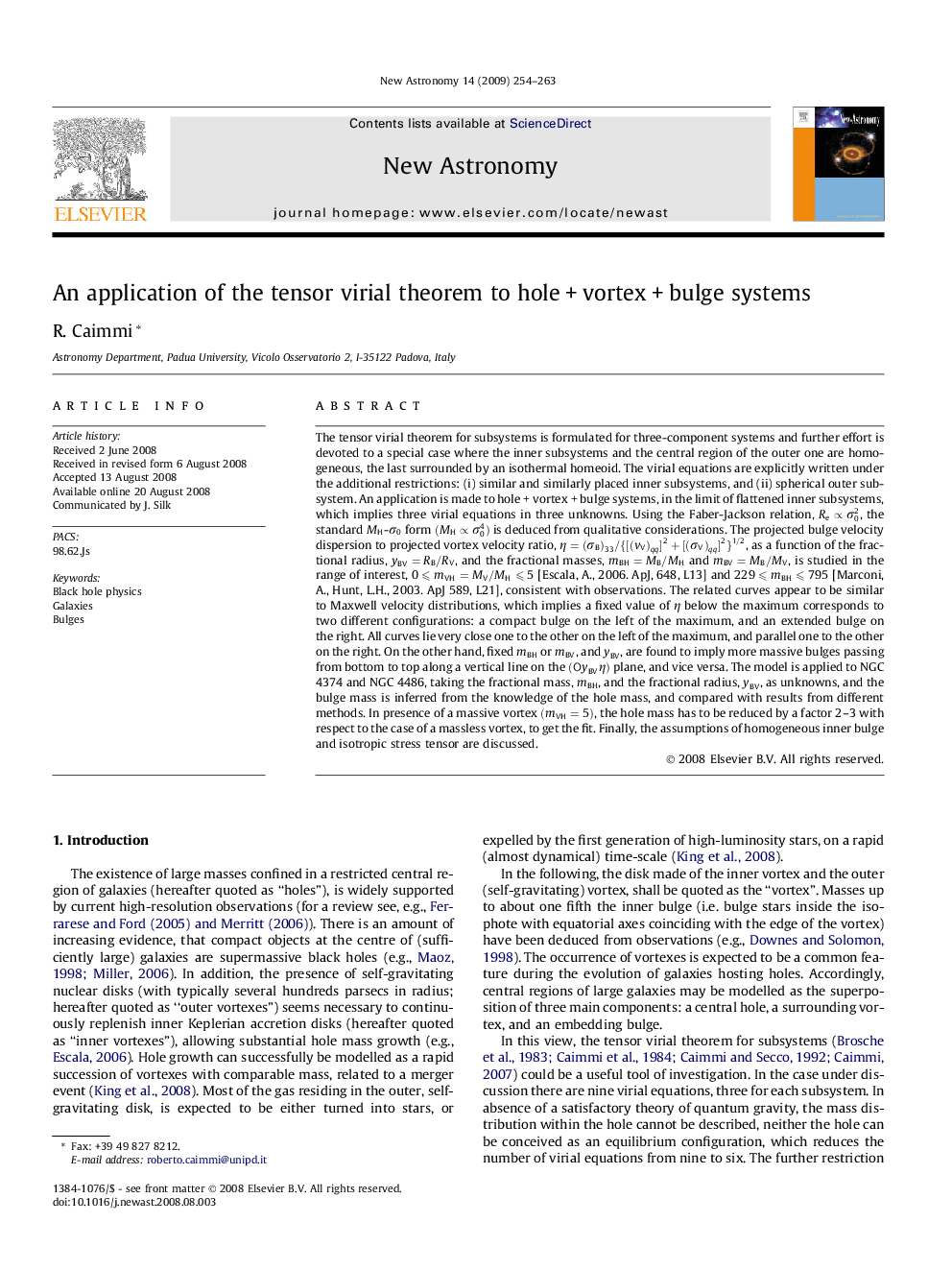| Article ID | Journal | Published Year | Pages | File Type |
|---|---|---|---|---|
| 1779639 | New Astronomy | 2009 | 10 Pages |
The tensor virial theorem for subsystems is formulated for three-component systems and further effort is devoted to a special case where the inner subsystems and the central region of the outer one are homogeneous, the last surrounded by an isothermal homeoid. The virial equations are explicitly written under the additional restrictions: (i) similar and similarly placed inner subsystems, and (ii) spherical outer subsystem. An application is made to hole + vortex + bulge systems, in the limit of flattened inner subsystems, which implies three virial equations in three unknowns. Using the Faber-Jackson relation, Re∝σ02, the standard MHMH-σ0σ0 form (MH∝σ04) is deduced from qualitative considerations. The projected bulge velocity dispersion to projected vortex velocity ratio, η=(σB)33/{[(vV)qq]2+[(σV)qq]2}1/2η=(σB)33/{[(vV)qq]2+[(σV)qq]2}1/2, as a function of the fractional radius, yBV=RB/RVyBV=RB/RV, and the fractional masses, mBH=MB/MHmBH=MB/MH and mBV=MB/MVmBV=MB/MV, is studied in the range of interest, 0⩽mVH=MV/MH⩽50⩽mVH=MV/MH⩽5 [Escala, A., 2006. ApJ, 648, L13] and 229⩽mBH⩽795229⩽mBH⩽795 [Marconi, A., Hunt, L.H., 2003. ApJ 589, L21], consistent with observations. The related curves appear to be similar to Maxwell velocity distributions, which implies a fixed value of ηη below the maximum corresponds to two different configurations: a compact bulge on the left of the maximum, and an extended bulge on the right. All curves lie very close one to the other on the left of the maximum, and parallel one to the other on the right. On the other hand, fixed mBHmBH or mBVmBV, and yBVyBV, are found to imply more massive bulges passing from bottom to top along a vertical line on the (OyBVη)(OyBVη) plane, and vice versa. The model is applied to NGC 4374 and NGC 4486, taking the fractional mass,mBHmBH, and the fractional radius, yBVyBV, as unknowns, and the bulge mass is inferred from the knowledge of the hole mass, and compared with results from different methods. In presence of a massive vortex (mVH=5)(mVH=5), the hole mass has to be reduced by a factor 2–3 with respect to the case of a massless vortex, to get the fit. Finally, the assumptions of homogeneous inner bulge and isotropic stress tensor are discussed.
